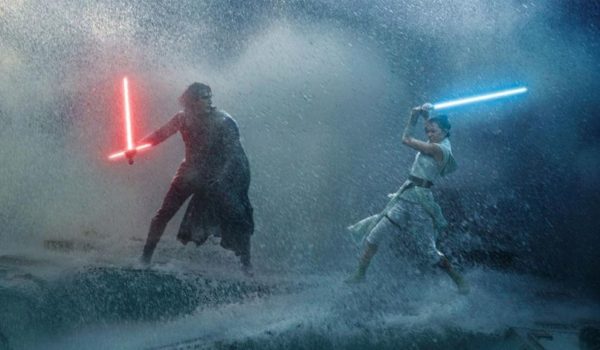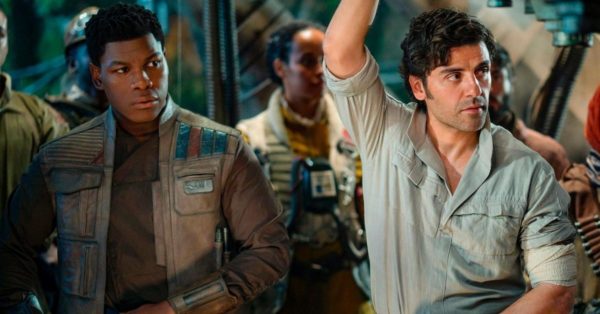
All things must come to an end, including the most recent trilogy of Star Wars, which concludes with The Rise of Skywalker.
With Rian Johnson’s polarizing second entry, The Last Jedi, upsetting a vocal online fanbase with its prioritization of women, people of colour and humour, all eyes were on The Force Awakens director JJ Abrams, who returns to helm this final chapter. Abrams, who also co-wrote the screenplay for The Rise of Skywalker with Chris Terrio, famously leaned into the nostalgia with the first film of the new trilogy, earning both praise (for recapturing the magic of the original) and derision (for playing it safe and refusing to colour outside of familiar lines).
The Rise of Skywalker unquestionably evokes The Force Awakens by sticking with familiarity: redemption arcs, large scale battles, a conventional hero’s journey and cameos from established franchise players. It’s 50% A New Hope and 50% Return of the Jedi. This means that fans of Johnson’s more playful, risky brand of storytelling will be left disappointed, as Abrams eschews anything remotely divisive in favour of re-telling the same Star Wars story that audiences have been getting for the last ~50 years.
The new film opens with a crawl that immediately confirms the return of Emperor Palpatine (Ian McDiarmid), Return of the Jedi’s villain, and recasts Supreme Leader Snoke, the villain of the two previous films, as little more than a figurehead for the First Order. The first hour or so is dedicated to an interplanetary search for a McGuffin: the Sith Wayfinder. This green triangle, which continues Abrams obsession with puzzle box narratives, will allow the rebels to locate the remote planet Exegol where Palpatine and the First Order are preparing to launch a new fleet of Star Destroyers, each armed with the ability to destroy a planet.
In order to prevent this, Palpatine has tasked Kylo Ren (Adam Driver) with assassinating Rey (Daisy Ridley), the last of the Jedi, before she can complete her training under General Leia Organa (the late Carrie Fisher, recreated from extra footage from The Force Awakens). Unlike the previous films, The Rise of Skywalker has no qualms about keeping its core cast together, so most of the new adventure features Finn (John Boyega), Poe (Oscar Isaac), C-3PO (Anthony Daniels), Chewbacca (Joonas Suotamo) and BB8 tagging along with Rey.
The search for the Wayfinder leads the group to a desert planet in the midst of a colourful celebration, an outpost on a frozen planet named Kijimi to introduce Poe’s ex, Zorri (Keri Russell) and eventually to Kef Bir, where Finn befriends Jannah (Naomi Ackie), a woman with a similar backstory to his. It is also here that Rey and Kylo Ren finally meet in combat – in a dazzling light saber battle atop a sunken Star Destroyer in the middle of an ocean.
Unfortunately none of film’s new characters are significantly fleshed out and the search for the Wayfinder too often plays like the film spinning its wheels in anticipation of an inevitable climax. Abrams sticks so close to the familiar playbook that he established in Force Awakens that there are no surprises in this narrative – Kylo Ren’s tortured anti-hero receives a pale variant of Darth Vader’s redemption arc, the mystery of Rey’s high profile parentage returns after The Last Jedi seemingly shelved it and the climax is a blow for blow recreation of Return of the Jedi.

These developments have been criticized as an attempt to retcon the less popular elements of The Last Jedi in order to appease a small vocal minority clamouring for what is perceived as more traditional Star Wars narratives. The focus on Kylo Ren’s salvation, the rise to power of Poe, the significantly decreased amount of screen time for Kelly Marie Tran’s Rose and a post-climax moment late in the film that is a complete character betrayal for Rey have led to criticisms that the new film was specifically written to address the outrage from the last film.
Abrams was in an undeniably difficult position with The Rise of Skywalker: in addition to being responsible for wrapping up the trilogy in some kind of universally satisfying fashion, there was no way for Abrams to make both sides of the divide happy. The Star Wars universe has long been plagued by toxic fan culture on a scale unparalled by other franchises (look no further than the vitriol hurled at Johnson to this day, or the comments that drove Marie Tran to delete her social media presence).
The reality is that Abrams took what he, Terrio and Lucasfilm executives likely deemed the least polarizing route, which was to return to the model Abrams used for The Force Awakens and deliver a safe, albeit bland, wrap-up that doesn’t offend anyone. This means that The Rise of Skywalker doesn’t truly satisfy anyone either. Had audiences not been tempted with more innovative and risky storytelling from Johnson, The Rise of Skywalker would undoubtedly be less frustrating. As it stands, the final entry in the Skywalker saga plays like a familiar adventure yarn with good special effects, up to and including a pat, expected ending for all of our heroes and an inevitable defeat of the bad guys.
So what if there are no genuine emotional beats*, or the adrenaline never spikes, or there are no stakes? Disney’s guaranteed themselves another billion-dollar holiday product.
*A caveat: the single best moment of the new film, and one that relies on nostalgia, but is achingly heartfelt, is when Chewie cries over the SPOILER death of Leia. Real tears, there. END SPOILERS
Rating: 3/5

4DX Review
I was lucky enough to screen the film in 3D 4DX, which turns the film into an immersive experience for audiences. 4DX is incredibly well suited for action films where viewers can experience the literal impact of bumps, scrapes and blast-offs in time to the imagery on screen. While typically the experience is more bombastic and used to reinforce hard hitting sequences in films, it can also complement smaller directorial moments, like when the 4DX chairs slowly and gently lean forward or back when Rey enters the Sith throne room or for the opening crawl.
In the case of The Rise of Skywalker, the 4DX experience makes better use of key elemental components of the film that recent outings such as Terminator: Dark Fate. While there are expected jostles and shakes as the Millennium Falcon narrowly avoids collisions or ships explode, it is the film’s water sequences that stand out.
When Rey and Kylo Ren battle each other atop a nearly sunken ship in the middle of a pounding storm, the 4DX water effects alternate between a light misting and full-on droplets (so much so in the latter case that I was prompted to wipe my 3D glasses down!).
The other significant component that The Rise of Skywalker makes use of are flashes of light to accompany laser blasts. This is particularly evident during the thrilling heist sequence aboard Kylo Ren’s ship when our heroes fend off Stormtroopers with punctuated flashes of light accompany shots fired.
A note of warning: every 4DX experience includes a warning for audiences who may be triggered by the use of flashing lights, but also motion sickness. Typically this isn’t hugely problematic because the 4DX experience is more akin to a light ride, but one specific sequence when our heroes meet up with Lando Calrissian (Billy Dee Williams) takes place aboard a slow moving caravan that rocks back and forth. Of all of the components of this 4DX screening, the gentle rocking motion (akin to being out on the water on a cruise ship) is the most challenging motion of the entire experience!
The Rise of Skywalker isn’t as bombastic as other 4DX experiences, but the subtle, quieter moments work better in 4DX. For a fully immersive experience, be sure to sit in the front row: it is lightly clouded in smoke when ships crash.
Rating: 4/5